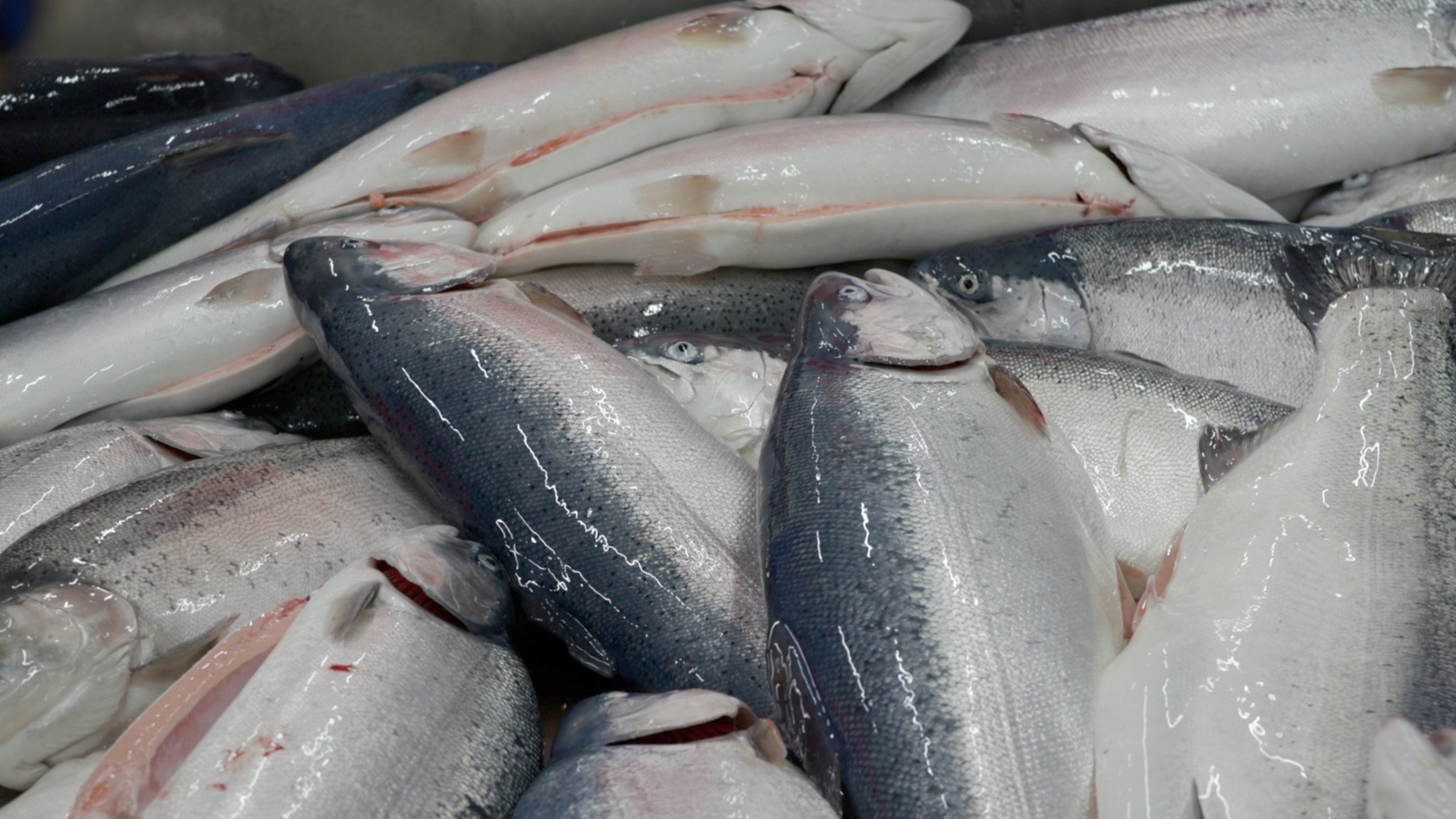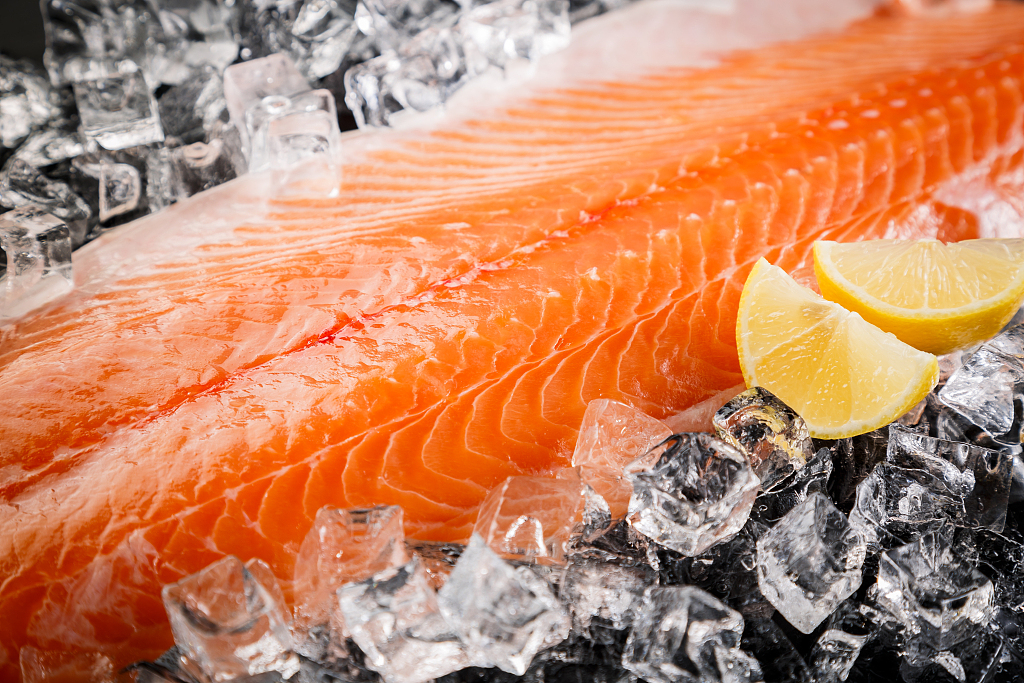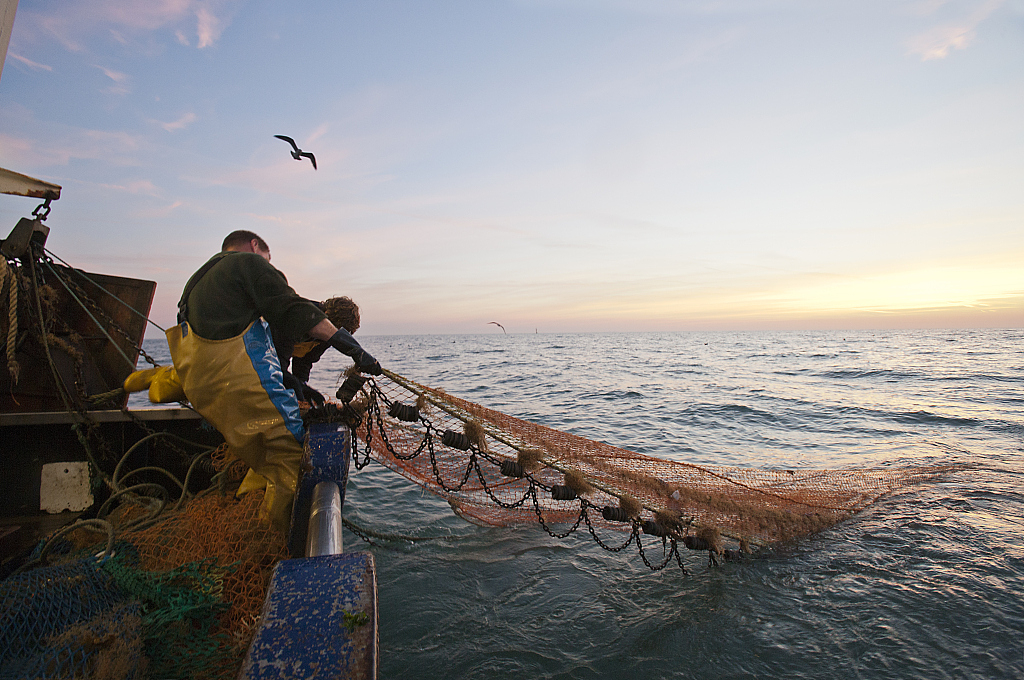

With its vast coastline, Russia aims to increase the production of farm-grown fish and seafood products. The goal is to produce enough for the domestic market and also export - China is an obvious choice. CGTN's Aljosa Milenkovic visited one of those farms in the Barents Sea.
Sea farming opens new opportunities in Russia
To grow one kilogram of beef, it takes four to 10 kilograms of food to feed the animals. Three kilograms of food is needed for one kilogram of pork meat and 2.2 kilograms for one kilo of poultry. At the same time, with just 1.1 kilograms of food, producers can get one kilogram of fish.
That makes fish the most eco-friendly protein source of animal origin. And not just environmentally friendly, but also cost-efficient.

Countries with a vast coastline, like Russia, are now trying to seize the opportunity and expand their production of farm-grown fish and seafood.
Russian producers set the goal at not just producing enough for the domestic market but also to export. And the Chinese market is their obvious choice. Although the Chinese market is not a huge fan of redfish, like salmon, it shows increasing interest in it.
Recently established Russian sea farms in the Barents Sea close to Norway are hoping to start regular exports of their high quality salmon to China. CGTN went to visit one of its main locations near Kildin island, four hours boat ride from Murmansk. In 16 cages. almost three million salmons grow in its cold and pristine waters.
"Every net cage contains between 150 and 170 thousand salmons. The cage goes 20 meters below the surface and fish there is perfectly free. In the same water and the same environment as the wild fish." Nikita Paderin, deputy CEO of the Russian Aquaculture told CGTN.

VCG Photo
Russians are picking up the knowledge from Norwegians on how to grow salmon. And they hope that combining that experience and clean natural environment, they can produce outstanding products.
"It is ecologically clean products. This is especially good because such an image was established for Russia in the markets of regional consumers. Due to the relatively small population and clean nature, our products are eco-clean. And in Asian countries, seafood is literally grown in sewage," said Daniil Polovinka, deputy CEO of the government's Far Eastern Investment and Export Agency.
Asian markets are the end goal
It is Asia that the Russian producers are aiming for. Salmon prices there are higher than anywhere, making that market the most attractive in the world.
Ilya Sosnov, CEO of the Russian Aquaculture, told CGTN, "in the long term, strategically, China is also a very important market for us, because it is close to Russia, there is a railroad connection between Russia and China. And, consumption of salmon in China is expected to rise several times. So this is the place to be, and we want to be in China."

VCG Photo
But that plan comes with a catch, since even from Soviet-era times, Russia has struggled to produce enough fish and seafood products to satisfy its own needs. With some Chinese investments in the Far East of the country and some domestic efforts, producers hope to at least narrow the gap.
The producers are saying that it is economically viable to export part of their production to China. That will give them more opportunities to achieve higher profits, and at the same time to supply the Chinese market with the products that are demanded only by them.
Just recently, the first test delivery was sent from this farm to China and the next ones are expected to follow.

Copyright © 2018 CGTN. Beijing ICP prepared NO.16065310-3
Copyright © 2018 CGTN. Beijing ICP prepared NO.16065310-3